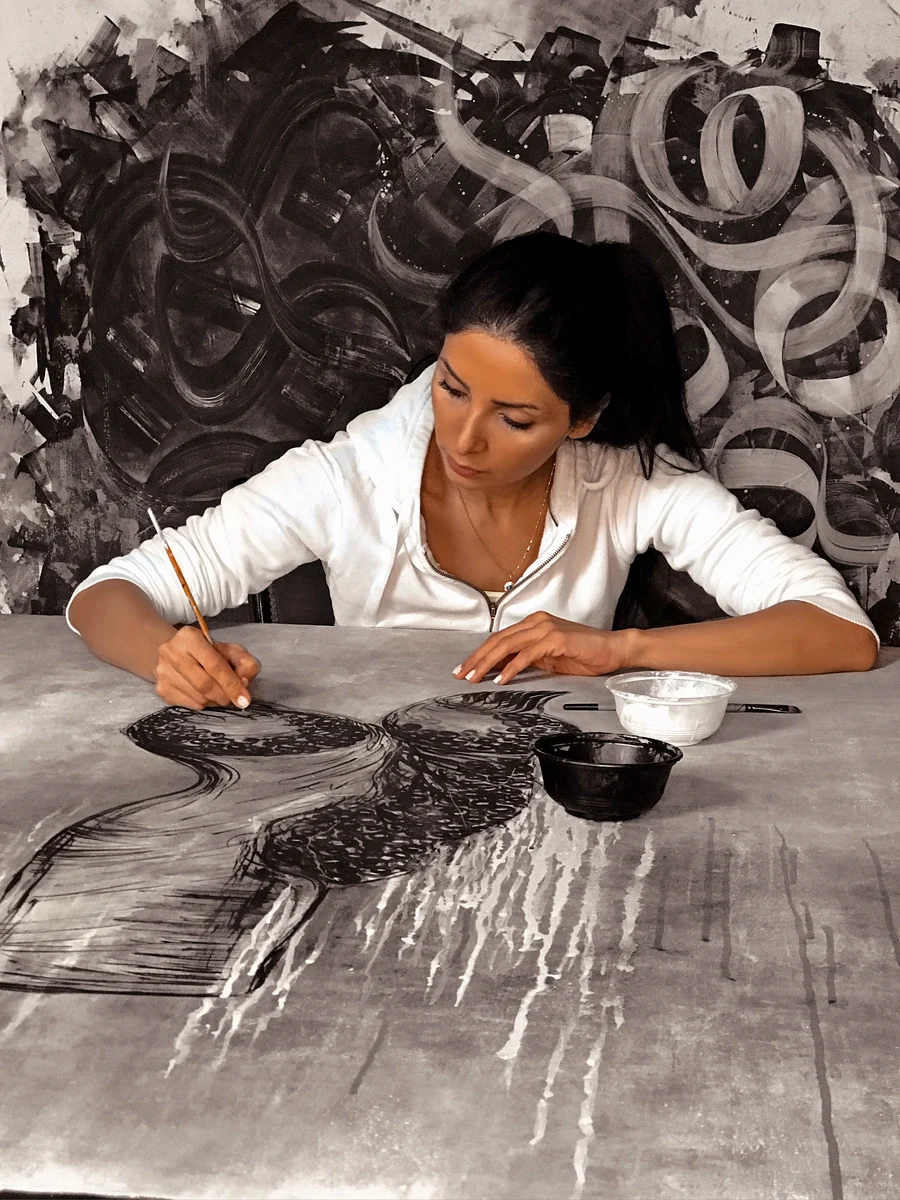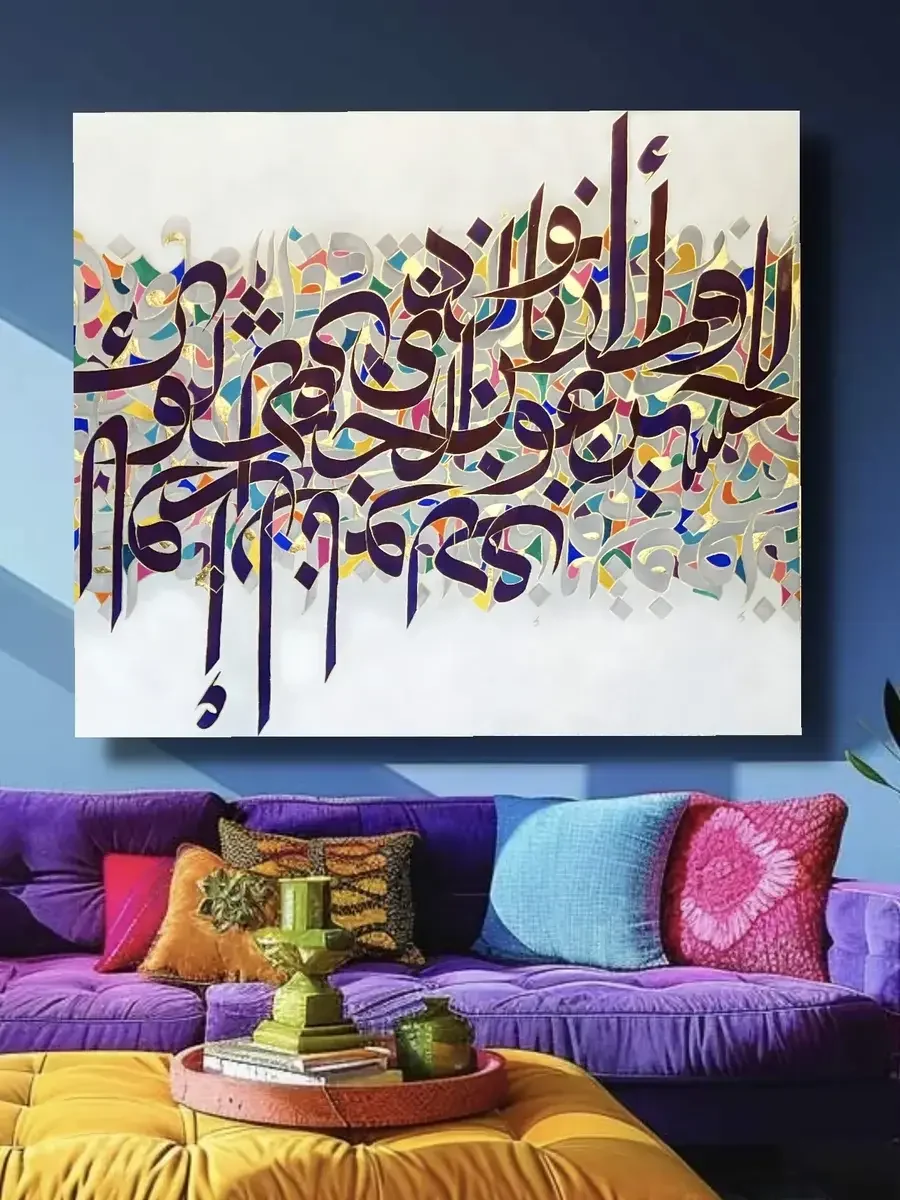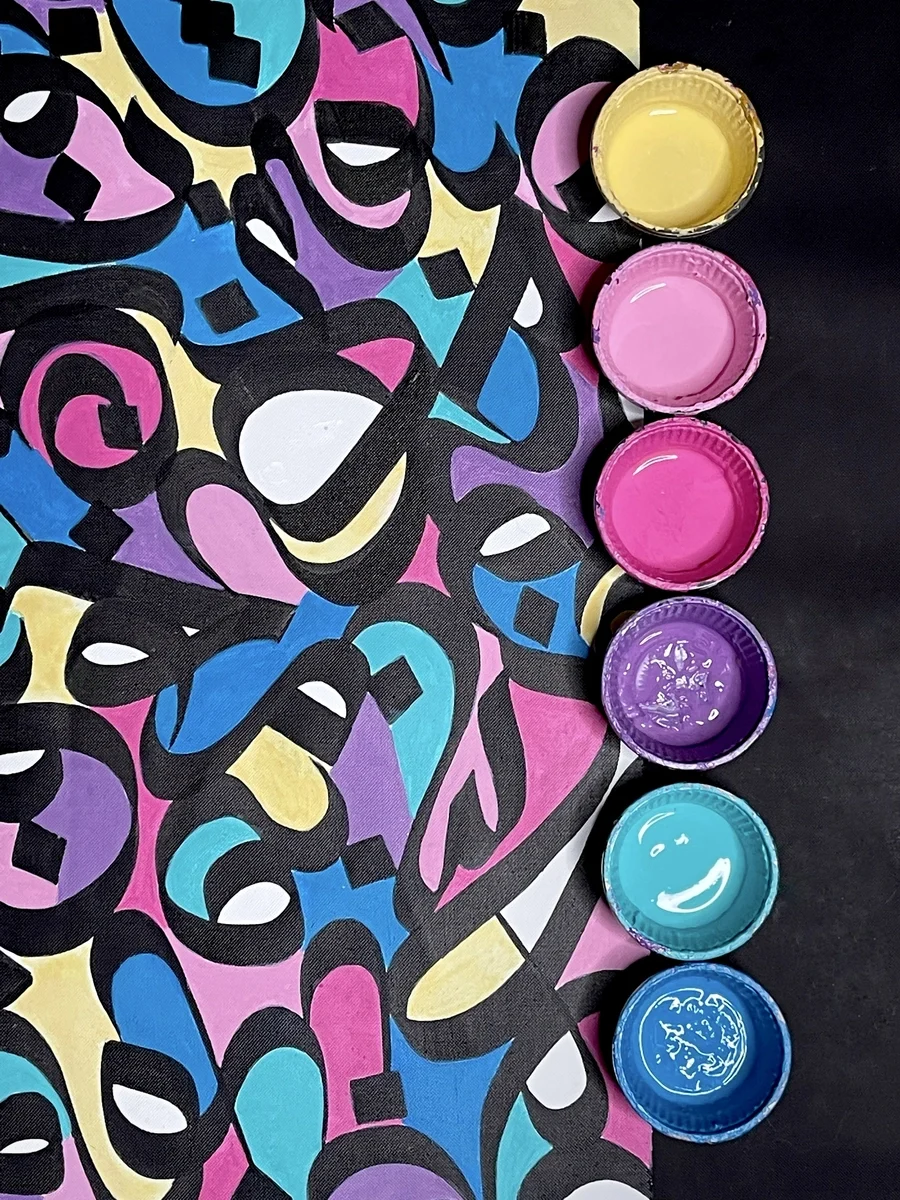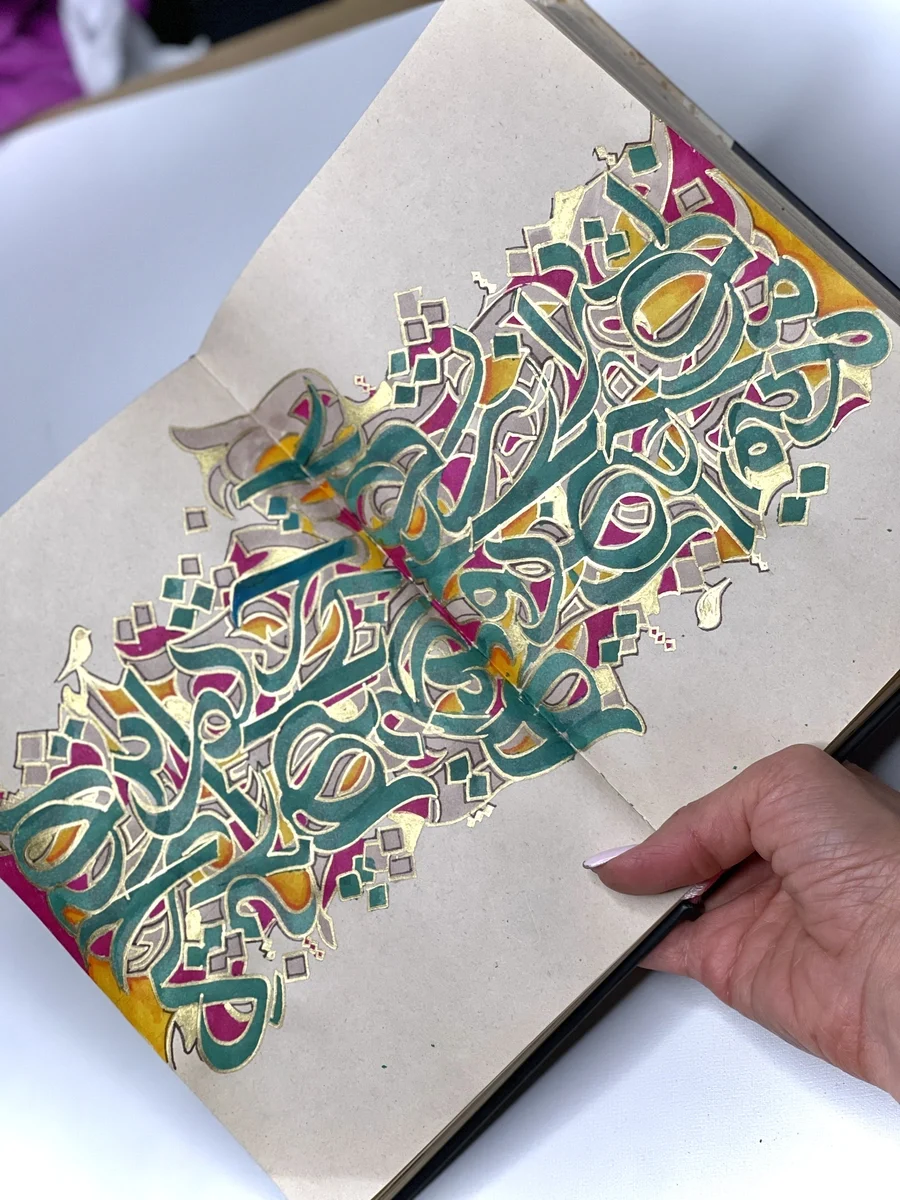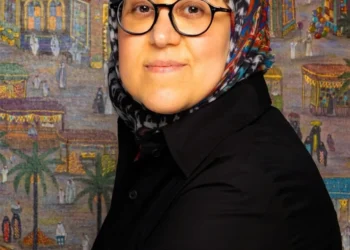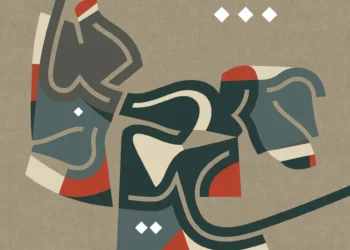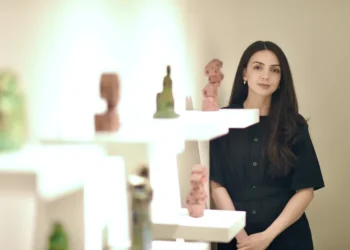CAN YOU SHARE WITH US THE INITIAL SPARK THAT IGNITED YOUR PASSION FOR CALLIGRAPHY, AND HOW THAT EARLY INTEREST HAS EVOLVED INTO THE STUNNING, BOLD-COLORED PIECES WE SEE TODAY?
From childhood, I’ve been sensitive to beauty, harmony, and order. These are qualities that I find beautifully intertwined in calligraphy. I believe all art forms share one essential foundation: structure, beauty, and balance. Creating gives me peace. Through calligraphy, I’ve created my own world, one that is colorful, expressive, and deeply feminine. Ever since I was a child, I imagined that every name or word had its own unique color. This wasn’t something I was taught. It was simply the way my mind visualized language. When I began practicing calligraphy, that same energy stayed with me. So, even though traditional calligraphy is often rendered in black or muted tones, I felt compelled to give letters and words a new kind of life, infusing them with vibrant color and emotional tone.
YOUR CALLIGRAPHY WORK INCORPORATES VIBRANT COLORS AND INTRICATE DESIGNS. HOW DO YOU CHOOSE YOUR COLOR PALETTE, AND WHAT EMOTIONS DO YOU AIM TO EVOKE THROUGH THESE STRIKING VISUAL CHOICES IN YOUR ART?
Ancient Iranians used color to express character and narrative. This is something that aligns closely with today’s color psychology. To me, color is more than just aesthetics; it’s a powerful medium of emotion and communication. Each color carries its own meaning and can stir different feelings in the viewer. My palettes are often inspired by nature. I find the colors of the sky, birds, and even the intricate tilework of historic architecture to be flawless and endlessly inspiring. These colors, rooted in our culture, always catch my eye. I believe an artist should be present in their work; their tastes, their nature, and the emotions they feel while creating.
CALLIGRAPHY IS OFTEN TIED TO CULTURAL HERITAGE. HOW DOES YOUR OWN BACKGROUND INFLUENCE THE THEMES AND STYLES YOU INCORPORATE INTO YOUR ARTWORK, AND HAVE YOU DRAWN INSPIRATION FROM OTHER CULTURES AS WELL?
Geography, climate, and environment shape culture. Culture deeply influences an artist’s vision. Art often reflects the values, beliefs, and lived experiences of its surroundings. Someone raised in a desert landscape, surrounded by earthy tones and blue skies, will have a different worldview than someone raised among the lush, colorful forests of the north. I come from a culture where color has always held a sacred place in art. Iranian tilework, especially in religious and historic architecture, uses joyful, vivid colors to create a sense of beauty and spiritual depth. These colors, inspired by nature and tradition, breathe vitality into any space. It always spoke to me as both an artist and an Iranian.
AS AN ARTIST, HOW DO YOU BALANCE THE TRADITIONAL ASPECTS OF CALLIGRAPHY WITH CONTEMPORARY ARTISTIC EXPRESSIONS? DO YOU FEEL THERE’S A SPACE FOR INNOVATION WITHIN THIS ANCIENT ART FORM?
Traditional calligraphy, with its rules and foundations, has preserved its authenticity across centuries. But today’s artists aren’t content with repetition or confinement. They strive for innovation and challenge established norms. In recent years, we’ve seen more and more artists consciously breaking away from conventional styles, introducing new forms and expressions that resonate with a wider and more modern audience.
CAN YOU DESCRIBE THE EVOLUTION OF YOUR TECHNIQUES OVER THE YEARS? WHAT WERE SOME KEY TURNING POINTS IN YOUR ARTISTIC PRACTICE THAT LED YOU TO DEVELOP YOUR UNIQUE STYLE OF CALLIGRAPHY?
My journey began with oil painting and realism when I was just 11 years old. Over time, I explored various techniques and styles. One of the reasons I fell in love with art is the sense of freedom it gives. Those deliberate yet spontaneous movements. In traditional calligraphy, the strict structure and rules can sometimes limit personal expression. For me, this created a tension. I wanted to explore, to be bold and expressive. Eventually, I started viewing letters not just as symbols for words, but as visual elements. I began using them like shapes or forms, like other artistic elements in my compositions. This shift removed the limitations I felt and opened a new doorway into the world of calligraphy. One that was expressive, unbounded, and truly my own.
YOUR PIECES OFTEN CONVEY POWERFUL MESSAGES THROUGH SCRIPT AND COLOR. HOW DO YOU SELECT THE TEXTS OR QUOTES THAT RESONATE WITH YOU, AND WHY DO THESE PARTICULAR WORDS FEEL SIGNIFICANT TO YOUR ARTISTIC JOURNEY?
As Iranians, we are inherently poetic, narrative- driven, and auditory people. We don’t just like to see art. We like to hear its story. We love to narrate our experiences, even when it comes to visual forms like painting. Calligraphy itself is abstract by nature. It sits perfectly beside poetry, which is both lyrical and abstract in its own right. The poems I choose usually mirror what I’m feeling at that time. They carry meaning, memory, and emotion. They’re often phrases that stir something within me, and I believe they do the same for the viewer. When I pair poetry with calligraphy and then bring in colors and forms, it becomes a kind of visual storytelling, like a layered, emotional message that speaks to the heart as much as the eyes.
COLLABORATION OFTEN BRINGS NEW DIMENSIONS TO ART. HAVE YOU COLLABORATED WITH OTHER ARTISTS OR CREATORS IN YOUR WORK? IF SO, HOW DO THESE PARTNERSHIPS IMPACT YOUR APPROACH TO CALLIGRAPHY?
Absolutely. Like many art forms, calligraphy can move beyond the traditional canvas. It has functional and decorative potential too. Collaborating with other creators has added new dimensions to my practice. For example, working with Laan Design, a home accessories brand, and Hunayn, a perfume brand, allowed me to bring calligraphy into the worlds of fashion and interior design. These collaborations show how calligraphy can blend with other disciplines by adding elegance, cultural identity, and emotion to everyday objects. It takes the art off the wall and into daily life.
IF YOU COULD IMPART ONE PIECE OF WISDOM OR INSIGHT TO ASPIRING CALLIGRAPHY ARTISTS LOOKING TO FOLLOW IN YOUR FOOTSTEPS, WHAT WOULD IT BE, AND HOW CAN THEY FIND THEIR OWN UNIQUE VOICE WITHIN THIS VIBRANT DISCIPLINE?
One of the qualities I’m most proud of is my persistence. I’ve never walked away from something I cared about halfway. I believe in seeing things through. To anyone beginning their artistic path, my advice is this: keep going. Practice, be patient, observe deeply, and get to know yourself. That’s where your true creativity lives.


























